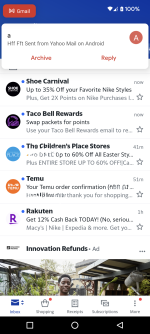I am downloading data from the Google Play Store console of my app download statistics. It has these fields:
(1) Daily Device Installs,
(2) Daily Device Uninstalls,
(3) Total User Installs,
(4) Daily User Installs,
(5) Daily User Uninstalls,
(6) Active Device Installs
There seems to be no documentation anywhere on Google for what exactly all these fields mean. So I asked ChatGPT, and this is what I got:
- Daily Device Installs - This represents the number of times your app was installed on a device in a single day. It includes both new installations as well as re-installations.
- Daily Device Uninstalls - This represents the number of times your app was uninstalled from a device in a single day.
- Total User Installs - This represents the total number of unique users who have ever installed your app on their device.
- Daily User Installs - This represents the number of new unique users who installed your app on their device in a single day.
- Daily User Uninstalls - This represents the number of unique users who uninstalled your app from their device in a single day.
- Active Device Installs - This represents the number of unique devices that have your app installed and have been used at least once in the last 30 days. This metric can give you an idea of how many devices are currently using your app.
I would like to know from the experts here if the definitions above are all correct, or if some are off.
A second issue: I also seem to see something weird. For all of the past 30 days, the "Total User Installs" field is always zero in my report, though the "Daily Device Install" and "Daily User Installs" are both always showing 2-digit numbers. So why is the "Total User Installs" zero for every day?
The third issue: The "Daily Device Uninstalls" field is also always zero, though the "Daily User Uninstalls" is never zero. Why this discrepancy?
The fourth issue: The "Active Device Installs" on any day should IMO be equal to "Active Device Installs" the previous day, plus "Daily Device Installs" for that day, minus "Daily Device Uninstalls" (which, like I said, is always zero) for that day. It is not even close. Even if I substitute "Daily Device Uninstalls" with "Daily User Uninstalls", the issue is still the same - it doesn't add up.
I will be really grateful for anyone who takes their precious time out to offer me some pointers to all this internally inconsistent data. Thank you!







